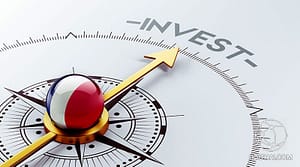More than just a network of connected devices, the Internet of Things (IoT) has become a game changer in 21st century industry. As the technology enables physical devices and everyday objects to communicate, interact and exchange data over the Internet, they can be monitored and controlled from anywhere and at any time. With this disruptive function, the IoT has forced both producers and consumers to question the traditional concepts of products, services, and even business models.
The disruption of the IoT
The increasing rate of smartphone subscriptions has provided the IoT with greater opportunities to connect users and devices via the internet. Facilitating remote operation and data collection, this way of interaction between users, smartphones, and devices has disrupted various industries in the past few years. An obvious example would be the way Uber converted old cars into connected vehicles that can be tracked, located, and hired by users.
While connectivity remains the elemental foundation on which the IoT is built, computational power and sensors are also crucial supporting features that take this technology to a whole new level by enabling customization of the user’s experience that is impossible with connectivity alone. As just one example, an IoT integrated air conditioner can now calculate a cooling schedule that optimizes energy efficiency while maintaining the desired temperature thanks to embedded sensors and remote control.
With industrial practices forever disrupted, businesses are now integrating this paradigm-shifting technology as a matter of survival. Ikea, for example, has repositioned itself as a smart home company by introducing new product lines that embrace the IoT, including a set of smart blinds that can be opened and closed via wireless remote and voice command. Previously, Ikea also launched its smart LED bulbs in 2017 with distinct features offering remote controlling and brightness adjustment of up to 10 wireless LEDs. With the continued momentum of smart electronics, the company’s aim is to reach “absolute convenience” by expanding the integration of their smart products with artificial intelligence devices, including the Apple Homekit, Alexa, and Google Assistant.
The rise of the IoT
In response to the growing demands of the consumer market, the cost of IoT products tumbles as more developers enter the booming but increasingly competitive market. Gartner, a global research and advisory company, predicted that 1 million IoT devices will be installed hourly by 2021, while HP also forecast an 18% CAGR in machine-to-machine connections, reaching 27 billion by 2024. In Thailand, it was estimated that the country’s IoT industry will reach a value of Baht 33 billion by 2020, with research showing that Thai enterprises lead the way across ASEAN in terms of developing and implementing IoT solutions. Even though electronics and the smart home sectors have led the way in adopting the IoT, the technology is now expanding to create added value in the sharing economy. On the streets of Beijing, for example, people no longer have to worry about where to park their bike or whether the bike will be stolen. Companies like Ofo have adopted IoT technology to create a bike-sharing service that enables users to hire a registered bike near to their current location. The application incorporates an integrated sensor system and online payment that allow users to scan, unlock, and pay via the smartphones. This IoT integrated service has had an impact that goes beyond just convenience. The application can even calculate the calories each user has burned and the carbon emission that each user has helped to reduce by using the bikes.
The future development of IoT
With the imminent rise of IoT, the World Economic Forum published a report earlier this year named Realizing the Internet of Things: A Framework for Collective Action. The report identified five essential pillars that will shape the development of IoT:
1. Architecture and standards
The report suggested that scalable, future-proof and cost-effective architectural choices are important to the future of IoT, while it also indicated that reference architecture will help the IoT develop its standards and best practices.
2. Security and privacy
With issues and concern of cybersecurity being discussed widely in the past months, transparency and clarity in the data collecting policy of the IoT remain highly relevant to its adoption rate. These challenges regarding public opinion on IoT transparency have to be addressed and assurances provided for its longterm success.
3. Shared value creation
Budgetary and financial considerations remain the constraints holding back IoT investment in its early days. Overcoming these challenges requires leadership and vision from businesses and governments.
4. Organizational development
To enable full integration, the IoT requires a level of rethinking by businesses that will promote widespread adoption within their organizations. The report suggests that achieving this requires the compliance of three components: executive leadership, a realignment of incentives, and massive upskilling.
5. Ecosystem governance
To avoid issues among the key players, such as competing technology, competing vendors, or varying public opinion, the IoT ecosystem requires internal regulation and the collective attention of industry members to create an effective selfgovernance mechanism.
Offering the potential to make people’s daily lives safer, more efficient, and more convenient, the IoT is considered to be a game-changing opportunity with the power to have a significant impact on businesses and society as a whole. To ensure the sustainable growth of the IoT, concerns regarding security, trust, and transparency have to be addressed through constructive principles in order to eliminate unnecessary risks that may hinder the growth of the industry in the future.
In line with the Thailand 4.0 policy of upgrading the country’s industry through innovation and digitization, the Thai government has implemented a number of measures to address these issues and facilitate the growth of the IoT industry. The Digital Agenda 2018 introduced by the Ministry of Digital Economy and Society is designed to promote a digital workforce and economy with a focus on smart cities and IoT development through five key areas: digital infrastructure, digital government, digital manpower, cyber security and digital tech developments. The Ministry’s Smart Cities Framework also aims to achieve 77 smart cities across Thailand by 2023. Defined as being fully working and sustainably operational urban environments that are managed through digital technologies, pilot smart cities are already being developed and tested in certain provinces. In the 21st century, it is no longer enough to be connected. The growth of the IoT means that every connection is an opportunity to create a smarter world.
Sources : https://www.boi.go.th/upload/content/TIR_Newsletter_February2019_AW_5c908cc7bf8e5.pdf
To see all our publications


